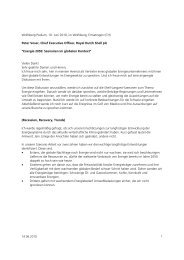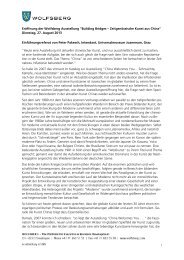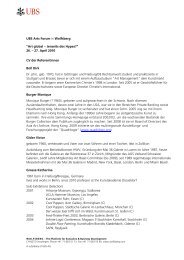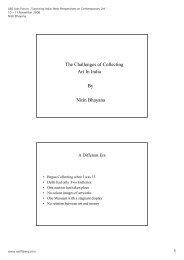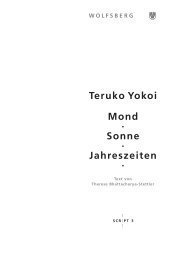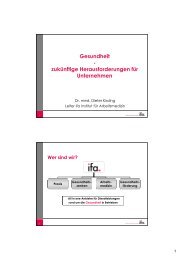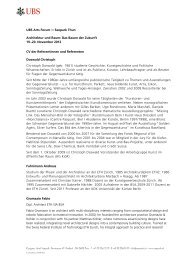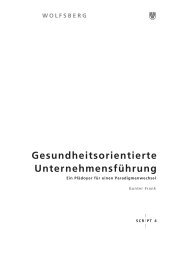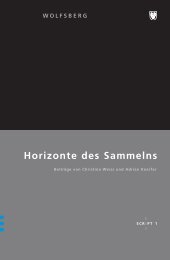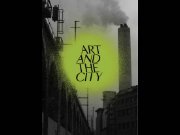An Introduction to The Arcadian Library 1 by Dr Robert ... - Wolfsberg
An Introduction to The Arcadian Library 1 by Dr Robert ... - Wolfsberg
An Introduction to The Arcadian Library 1 by Dr Robert ... - Wolfsberg
You also want an ePaper? Increase the reach of your titles
YUMPU automatically turns print PDFs into web optimized ePapers that Google loves.
<strong>An</strong> <strong>Introduction</strong> <strong>to</strong> <strong>The</strong> <strong>Arcadian</strong> <strong>Library</strong> 1<br />
<strong>by</strong> <strong>Dr</strong> <strong>Robert</strong> Jones<br />
1. <strong>The</strong> symbol of the <strong>Arcadian</strong> <strong>Library</strong> is the Lily of the Valley, a plant that<br />
provides good groundcover in the shade of the mulberry trees of the Levant.<br />
I want <strong>to</strong> begin <strong>by</strong> thanking UBS very warmly on behalf of the <strong>Arcadian</strong><br />
<strong>Library</strong>, its chairman and staff, for inviting us <strong>to</strong> show you a small selection of<br />
antiquarian books in an exhibition at this conference and giving us the<br />
opportunity <strong>to</strong> talk a little about the library, its relevance and its work. In<br />
particular, we are grateful <strong>to</strong> Katja Perrot<strong>to</strong>, Rea Reichen and <strong>Dr</strong> Karolina<br />
Jeftic for their excellent work and kindness, <strong>to</strong> <strong>Dr</strong> Toni Schönenberger for his<br />
direction and hospitality here at <strong>Wolfsberg</strong>, and <strong>to</strong> Alain <strong>Robert</strong> for his<br />
foresight in masterminding the occasion. It is the good relationship between<br />
Alain and the Chairman of the <strong>Arcadian</strong> <strong>Library</strong>, and above all the imaginative<br />
understanding that they both share of the inspirational role of cultural his<strong>to</strong>ry<br />
in our lives that has made this collaboration so positive. <strong>An</strong>d what a<br />
remarkable forum <strong>Wolfsberg</strong> is. On Tuesday evening it was a real pleasure <strong>to</strong><br />
meet leading librarians and other book enthusiasts from the region at the<br />
German vernissage.<br />
<strong>The</strong> exhibition here in <strong>Wolfsberg</strong> follows on from a larger show in London that<br />
we put on in the first quarter of this year at the Brunei Gallery in London<br />
University’s School of Oriental and African Studies, when UBS were also in<br />
support.<br />
2. Having Mr Tim Stanley and <strong>Dr</strong> Jan Loop here <strong>to</strong>night <strong>to</strong> talk a little<br />
about the <strong>Arcadian</strong> <strong>Library</strong> is a great bonus. Tim Stanley combines a highly<br />
specialised skill in the field of Islamic codicology, that is <strong>to</strong> say the study of<br />
manuscripts from the Islamic world, with a deep knowledge of the wider<br />
his<strong>to</strong>rical issues concerning the art and culture of the Middle East. We are<br />
really grateful <strong>to</strong> you for taking time off from your duties at the Vic<strong>to</strong>ria and<br />
Albert Museum <strong>to</strong> speak for <strong>Arcadian</strong> at UBS. I am also particularly pleased <strong>to</strong><br />
have <strong>Dr</strong> Loop here from London University’s Warburg Institute where he has
<strong>An</strong> <strong>Introduction</strong> <strong>to</strong> <strong>The</strong> <strong>Arcadian</strong> <strong>Library</strong> 2<br />
<strong>by</strong> <strong>Dr</strong> <strong>Robert</strong> Jones<br />
played a key part in the very recent creation of a unique Centre for the His<strong>to</strong>ry<br />
of Arabic Studies in Europe, known <strong>by</strong> the acronym CHASE.<br />
It was some 30 years ago as an aspiring postgraduate student at that same<br />
institution that I began my own investigation of European knowledge of the<br />
Arabic language and its literature at the time of the Renaissance. But life has<br />
changed irrevocably in this period: what had seemed somewhat tangential,<br />
even obscure, back in those days has now come <strong>to</strong> be regarded as having<br />
much wider implications not only among academics but for the wider world:<br />
the background his<strong>to</strong>ry <strong>to</strong> the East-West Interface has become a key issue in<br />
<strong>to</strong>day’s world.<br />
3. <strong>The</strong> <strong>Arcadian</strong> <strong>Library</strong> is a private collection mainly consisting of some<br />
10,000 volumes of European antiquarian books relating <strong>to</strong> the Arab and<br />
Islamic world, but also containing prints and drawings, documents, and some<br />
important Islamic manuscript material. <strong>The</strong> library owes its existence <strong>to</strong> the<br />
vision of its chairman and <strong>to</strong> his family’s inspired approach <strong>to</strong> preserving and<br />
promoting the cultural heritage of the Levant and in particular its interaction<br />
with the West. What better vantage point from which <strong>to</strong> observe the his<strong>to</strong>ry of<br />
the ups and downs of the East West relationship than a rare book library<br />
<strong>The</strong> <strong>Arcadian</strong> <strong>Library</strong> holds a mass of detailed information on many aspects of<br />
this relationship that is of great interest <strong>to</strong> specialised academics who attend<br />
the seminars and lectures that we hold.<br />
On this occasion, a group of scholars spoke about the bindings and the<br />
provenances of the books in the library – and those papers are right now<br />
being developed in<strong>to</strong> a richly illustrated book that will be published in<br />
association with Oxford University Press in April next year. I shall return <strong>to</strong> our<br />
publications in a moment. Suffice it <strong>to</strong> say that a remarkable combination of<br />
<strong>to</strong>p quality scholarship with stunning visual presentation is unrivalled <strong>by</strong> any<br />
other publisher on the his<strong>to</strong>ry of the East-West subject. Though perhaps Doha<br />
and Abu Dhabi, if they are <strong>to</strong> live up <strong>to</strong> the challenges they have set
<strong>An</strong> <strong>Introduction</strong> <strong>to</strong> <strong>The</strong> <strong>Arcadian</strong> <strong>Library</strong> 3<br />
<strong>by</strong> <strong>Dr</strong> <strong>Robert</strong> Jones<br />
themselves and with the massive resources at their disposal, will be hard on<br />
our heals. Standing on the left of the picture is Professor Alastair Hamil<strong>to</strong>n,<br />
our academic advisor and the author of several of our books. It is ten years<br />
since the <strong>Arcadian</strong> <strong>Library</strong> created his current post of visiting <strong>Arcadian</strong><br />
Professor at London University’s School of Advanced Studies, resident at the<br />
Warburg Institute. Regrettably, he could not be with us <strong>to</strong>day as he is just now<br />
on a visit <strong>to</strong> some of the Coptic monasteries in Egypt.<br />
Quite apart from their precise his<strong>to</strong>rical contents, antiquarian books have<br />
always taken on a symbolic meaning explaining, as it were, why we are where<br />
we are now. It was royalty and the nobility who in the past were the collec<strong>to</strong>rs<br />
of these books; and many a country house is enriched <strong>by</strong> association with the<br />
vision and breadth of mind that their libraries exude. For a visi<strong>to</strong>r such as His<br />
Royal Highness Prince Charles, Prince of Wales, who read His<strong>to</strong>ry as an<br />
undergraduate at Cambridge and has a special sensitivity for the culture and<br />
arts of Islam, the library holds a deep fascination. He greatly appreciated a<br />
visit he made just three days before his 60 th birthday, on his return <strong>to</strong> London<br />
after the commemoration of Armistice Day at Verdun with President Sarkozy<br />
on 11 November 2008.<br />
4. Books more than any other medium have the ability <strong>to</strong> transport us <strong>to</strong><br />
another world, <strong>to</strong> take us back in time <strong>to</strong> earlier eras when very different sets<br />
of criteria informed and shaped people’s lives. Not that his<strong>to</strong>ry repeats itself in<br />
any precise way. But some knowledge, at least, of 19 th -century books on<br />
Afghanistan during the period of the so-called Great Game between Britain<br />
and Russia, might, for example, raise awareness of the cultural context of<br />
what we face <strong>to</strong>day.<br />
5. Aside from the combative aspect of our relationship – through the<br />
Crusades, the Islamic conquest of Spain and its eventual fall, the rise and fall<br />
of the Ot<strong>to</strong>man Empire, the conflicts of the Colonial period – aside from the<br />
aggressions around the Mediterranean Sea and beyond, more than any other<br />
medium, books can show us that there is an immensely productive and
<strong>An</strong> <strong>Introduction</strong> <strong>to</strong> <strong>The</strong> <strong>Arcadian</strong> <strong>Library</strong> 4<br />
<strong>by</strong> <strong>Dr</strong> <strong>Robert</strong> Jones<br />
creative dynamic when East and West resolve or just ignore their differences<br />
and join forces <strong>to</strong> exchange knowledge and bring about positive change and<br />
understanding. Looking at Pascal Coste’s beautiful views of the mosques of<br />
Cairo, do we really have <strong>to</strong> regard them as part of a devious conspiracy as<br />
some would have us believe<br />
6. <strong>The</strong> <strong>Arcadian</strong> <strong>Library</strong> has exhibited books at the Institut du Monde<br />
Arabe in Paris, twice at the Brunei Gallery in London, and in 2001, we<br />
mounted a joint exhibition in <strong>An</strong>twerp at the Plantin-Moretus Museum. This<br />
wonderful museum of printing his<strong>to</strong>ry is in the 16 th -century house of the printer<br />
Chris<strong>to</strong>phe Plantin, who was greatly interested in the Arab world and whose<br />
son in law, Franciscus Raphelengius, wrote the first Arabic-Latin dictionary <strong>to</strong><br />
be printed with Arabic type. <strong>The</strong> title of the exhibition summed up the rich<br />
melange of influences: Arab Culture and Ot<strong>to</strong>man Magnificence in <strong>An</strong>twerp’s<br />
Golden Age.<br />
7/8. John Ronayne designed and set up the exhibitions in the Brunei<br />
Gallery and here in <strong>Wolfsberg</strong>. As you see in <strong>An</strong>twerp, he completely<br />
transformed the Plantin museum with this installation.<br />
Just two months after 9/11, the exhibition attracted a large audience and<br />
much critical acclaim including the comment <strong>by</strong> the Financial Times reviewer<br />
who wrote: ‘In a sea of contemporary mistrust, [the <strong>Arcadian</strong> exhibition] is a<br />
small, clear plea for understanding.’ Perhaps these words express the most<br />
we can expect in terms of relevance from a private library of books. <strong>The</strong><br />
<strong>Arcadian</strong> <strong>Library</strong> is just that: a small, clear plea for understanding.<br />
Here in 2011 on the wooded shores of Lake Constance, we are in a quite<br />
different milieu <strong>to</strong> Paris, London or <strong>An</strong>twerp. We are just minutes away from<br />
the birthplace at Kesswill of one of the 20 th -century’s most original thinkers,<br />
Carl Gustav Jung;
<strong>An</strong> <strong>Introduction</strong> <strong>to</strong> <strong>The</strong> <strong>Arcadian</strong> <strong>Library</strong> 5<br />
<strong>by</strong> <strong>Dr</strong> <strong>Robert</strong> Jones<br />
9. and we are just an hour’s drive away from Europe’s greatest monastic<br />
library at Sankt Gallen with its inestimable treasure of early medieval<br />
manuscripts. In Sankt Gallen of the 9 th and 10 th centuries the production of the<br />
scrip<strong>to</strong>rium proceeded regardless of any influence from the Arab world,<br />
except perhaps for the anxiety caused <strong>by</strong> the occasional threat <strong>to</strong> the Alpine<br />
passes emanating from the Arab stronghold at Fraxinet, in the hinterland of St<br />
Tropez. <strong>An</strong>d in the later Middle Ages there is only the faintest trace in Sankt<br />
Gallen of the Arabic learning that was received in Spain and Sicily and was <strong>to</strong><br />
have such a profound effect on the mainstream of European learning from the<br />
11th century <strong>to</strong> the Renaissance.<br />
I refer, however, <strong>to</strong> one manuscript in the Stiftsbibliothek in Sankt Gallen that I<br />
had the privilege of inspecting yesterday.<br />
10. Codex 837 is a composite of different texts: it contains an Aris<strong>to</strong>telian<br />
work (not, incidentally, the lost second book of the Poetics made famous in<br />
the novel <strong>by</strong> Umber<strong>to</strong> Eco!). <strong>The</strong> manuscript also contains the work of three<br />
9 th -century philosophers, al-Kindi, Qusta ibn Luqa and Isaac ben Salomon<br />
Israili, a Muslim, a Christian and a Jew, all of whom wrote in Arabic, were<br />
translated <strong>to</strong> Latin, and are preserved thus in the Sankt Gallen manuscript.<br />
<strong>The</strong> significance for European learning of these Arabic texts is precisely the<br />
kind of thing that excites us at the <strong>Arcadian</strong> <strong>Library</strong>; and Tim Stanley will<br />
allude <strong>to</strong> some of the remarkable manuscript material preserved there.<br />
One very direct link that I should mention between <strong>Wolfsberg</strong> and the his<strong>to</strong>ry<br />
of European interest in Islam is as follows.<br />
11. In the UBS art collection, there are the two portraits of the two<br />
reformers, Martin Luther and Philipp Melanchthon, from the workshop of<br />
Lucas Cranach the Younger. <strong>The</strong>y hang in the main chateau. Jan Loop will be<br />
mentioning these reformers in his talk as they both provided prefaces for the<br />
first printing of the Qur’an in Latin, issued at Basel in 1543. <strong>The</strong> <strong>Arcadian</strong>
<strong>An</strong> <strong>Introduction</strong> <strong>to</strong> <strong>The</strong> <strong>Arcadian</strong> <strong>Library</strong> 6<br />
<strong>by</strong> <strong>Dr</strong> <strong>Robert</strong> Jones<br />
copy, once owned <strong>by</strong> a 17 th -century English ambassador <strong>to</strong> Constantinople,<br />
Sir William Trumbull, is exhibited here in <strong>Wolfsberg</strong>.<br />
12. <strong>The</strong> exhibition here in <strong>Wolfsberg</strong> sets out <strong>to</strong> do three things:<br />
First: <strong>to</strong> give you a taste of the ambience of the <strong>Arcadian</strong> <strong>Library</strong>, on the<br />
ground and first floors or the Parquin House there are static graphic panels of<br />
books and digi-frame displays of many images from the books, as well as a<br />
20 minute film based entirely on rare books entitled <strong>The</strong> Arabian Gulf in a<br />
World Context.<br />
Second: in the inner sanctum of the basement, we display a few examples of<br />
rare items from each of the six major subject areas of our holdings – Travel,<br />
Turcica, Science and Medicine, Islam and Christianity, Arab Spain,<br />
Scholarship and Literature.<br />
13. Third: on the first floor, we display the work we are doing <strong>to</strong> promote<br />
the contents of the library in association with Oxford University Press. You will<br />
be able <strong>to</strong> browse through the books and see their design and content. Eight<br />
titles have been issued <strong>to</strong> date, three more are now being prepared <strong>to</strong> go <strong>to</strong><br />
press, and many more are envisaged. Here are just some examples.<br />
This book concerns a seventeenth-century French diplomat and gifted linguist<br />
who was the first <strong>to</strong> render the Qur’an in<strong>to</strong> French.<br />
14. This book analyses for the first time the illustra<strong>to</strong>rs of the Arabian<br />
Nights in famous European editions. <strong>The</strong> book is richly illustrated.<br />
15. This book looks at Aleppo through the eyes of two seventeenth-century<br />
Scottish physicians.<br />
16. Copies of the book Bridge of Knowledge have been distributed <strong>to</strong> your<br />
rooms. On the screen here is what you will see if you take off the jacket of the
<strong>An</strong> <strong>Introduction</strong> <strong>to</strong> <strong>The</strong> <strong>Arcadian</strong> <strong>Library</strong> 7<br />
<strong>by</strong> <strong>Dr</strong> <strong>Robert</strong> Jones<br />
book, unfold it, and look at the inside: it is a panoramic view of the temple of<br />
the sun and colonnade at Palmyra <strong>by</strong> a mid-19 th century artist who travelled<br />
from the Gulf up the Euphrates <strong>to</strong> Syria.<br />
As you will see, Bridge of Knowledge goes far beyond what we were able <strong>to</strong><br />
display here or in London: it is in fact an intellectual and visual <strong>to</strong>ur of the<br />
entire library. We do hope you will enjoy it and that you will want <strong>to</strong> enrich<br />
your own libraries <strong>by</strong> purchasing the other books that we publish with Oxford<br />
University Press.<br />
17. I am going <strong>to</strong> close with a puzzle. This is a grammar book in Arabic<br />
about the Arabic language. It was printed in Rome in 1592. It mimics the style<br />
and layout of an Arabic manuscript, even <strong>to</strong> the extent of having a Bismillah at<br />
the head. It is unvocalised. That is <strong>to</strong> say it has none of the diacritical marks<br />
that would allow a novice <strong>to</strong> read the book. It is unreadable for a non-Arabic<br />
reader. Only <strong>by</strong> knowing the grammar of Arabic can you understand the<br />
correct vocalisation and read and understand the grammatical rules the book<br />
contains. So, though this book contains the key <strong>to</strong> understanding its contents,<br />
the key has so <strong>to</strong> speak been locked up inside it. What is the purpose of this<br />
book



